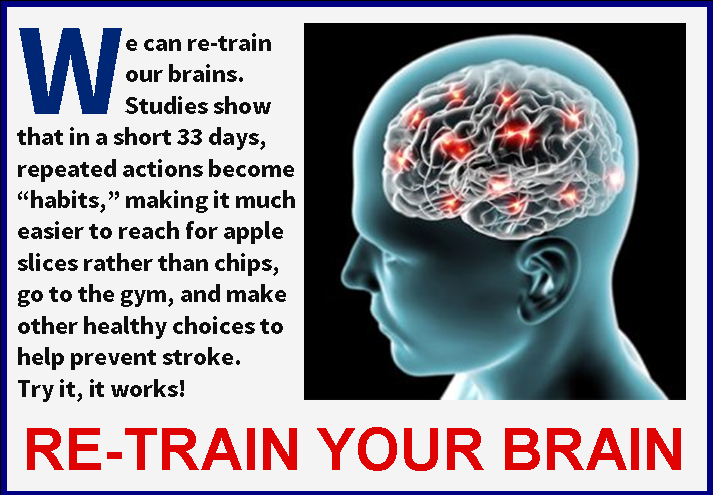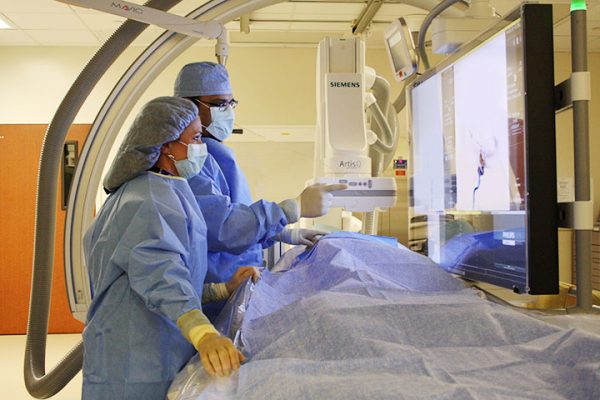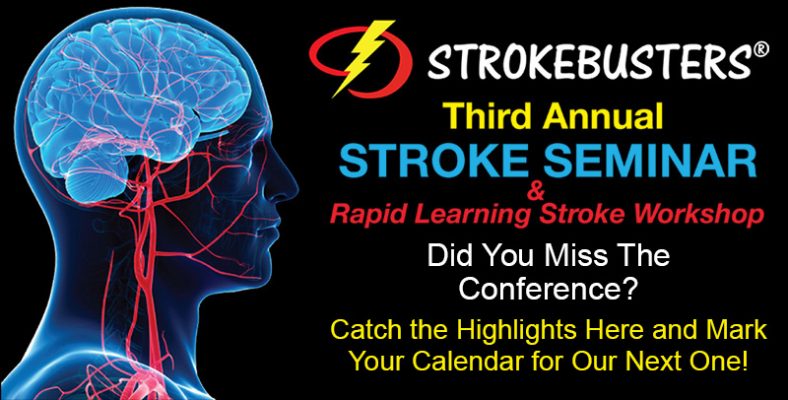The brain is inarguably the most complex organ in the body. Not only is it responsible for all of the necessary autonomic biological functions such as breathing, hearing, and muscle movement, but within those folds of gray matter it also manages cognitive function: a person’s dreams, ideas, personality traits, memories, and knowledge. The brain makes us who we are.
It is a soft and delicate structure, easily injured, yet securely contained in a hard shell designed to protect it from bumps, bruises, and sudden impacts. Yet, no matter how well the brain is protected on the outside, it is subject to wear and tear on the inside – through our lifestyle choices, the aging process, and hereditary factors.
People are often astonished to know that over 80% of strokes are preventable, and are a result of our lifestyle choices.
Stroke can be attributed to three main causes:
- Lifestyle Choices and Health Conditions
- Heredity and Ethnicity
- Injury or Trauma
There are two types of risk factors for stroke: Controllable and Uncontrollable.
Controllable Risk Factors
Controllable risk factors generally fall into two categories: Lifestyle risk factors and medical risk factors. Lifestyle risk factors are those you can typically change, reducing your risk while improving your overall health. Medical risk factors can often be treated, also reducing your risk of stroke. These can best be managed by working closely with your physician.
Medical Risk Factors
High Blood Pressure – High blood pressure is the number one stroke risk factor when left untreated. High blood pressure is often referred to as “the silent killer” since it does not produce any signs and symptoms in many people and it usually goes unnoticed. This is why you should have your blood pressure checked regularly by your doctor, at local health fairs, at your pharmacy or supermarket or at home with an automatic blood pressure cuff.
Atrial Fibrillation – AFib is an abnormal, irregular heartbeat that can increase stroke risk by 500%. AFib can cause blood to pool in the heart which may cause a clot to form and cause a stroke. A normal heart rate is 60-100 beats per minute. By simply checking your wrist pulse, you can screen for regularity and speed of your heartbeat. If you detect an irregular pulse, report this to your doctor. This simple self-check can help in diagnosing Afib faster and preventing further complications. Ultimately, your doctor must diagnose and treat AFib.
High Cholesterol – Cholesterol is a fatty substance in blood that is made naturally by the body. It also comes in food. High cholesterol levels, in combination with other risk factors, can clog arteries causing narrowing and eventually – stroke. Know your cholesterol levels and consult with your doctor if your total cholesterol level is more than 200.
Diabetes – Poorly controlled diabetes leads to atherosclerosis and circulation problems which can lead to stroke. It is important to work with your doctor and dietitian to help manage your diabetes.
Cardiovascular Disease – also known as heart disease, is a disease of the heart and arteries often related to the development of atherosclerosis. Atherosclerosis is an accumulation of plaque that causes the artery passages to harden and narrow, limiting blood flow to the brain. This buildup alone could lead to a stroke, but if, in addition, a blood clot forms, it will result in complete loss of blood flow to the brain. People with heart disease must work diligently with their doctors to reduce their risk of heart attack and stroke.
Lifestyle Risk Factors
Smoking and Tobacco Use – Smoking doubles the risk of stroke. It damages blood vessel walls, speeds up artery clogging, raises blood pressure and makes the heart work harder.
Alcohol Use – Alcohol use has been linked to stroke in many studies. Most doctors recommend not drinking or drinking only in moderation — no more than two drinks each day for most men, and one drink per day for most woman.

Drug Abuse – Drugs such as cocaine, ecstasy, meth and others, can cause inflammation of arteries and/or stimulate the sympathetic nervous system causing hypertension, which can lead to brain hemorrhaging.
Physical Inactivity – Most people should engage in aerobic exercise for 30 minutes, five times a week. Besides the traditional benefits, the brain will benefit from exercising as well by improving blood flow to the brain and increasing collateral circulation. Collateral circulation is a system of small normally closed arteries that start to carry blood to parts of the brain when a major artery is blocked. It serves as an alternative blood supply system and can make a positive impact on stroke treatment and recovery. Improving blood flow and collateral circulation increases the chances of a more positive recovery in the event a stroke does occur.
Obesity – the risk of stroke is greater the higher the body mass index (BMI). Being overweight can contribute to the development of plaque in the arteries of the brain which could eventually result the onset of ischemic or hemorrhagic stroke. Diseases often related to obesity are diabetes, hypertension, sleep apnea, and high lipid levels – all controllable risk factors of stroke.
Poor Diet – Excess salt intake, saturated and trans fats, and cholesterol increase risk for TIA and stroke.
Use of birth control pills – Any hormone therapy affects the risk of TIA and stroke, and should be under the consultation of a physician.
Uncontrollable Risk Factors
Age – While every age is susceptible to stroke, those over age 55 are at the highest age risk. This risk doubles with each decade of age after 55.
Gender – Women are at greater risk of death from stroke, while men suffer more TIAs, or mini-strokes.
Ethnicity – Blacks, Hispanics and Asian/Pacific Islanders are at higher risk for stroke.
Heredity – having a family history of stroke or Transient Ischemic Attack (TIA).
Having had a previous stroke or TIA.
The Medical Conditions Fibromuscular Dysplasia (FMD) – a rare artery-narrowing condition, or Patent Foramen Ovale (PFO) – a hole in the heart, predispose a person to stroke.





